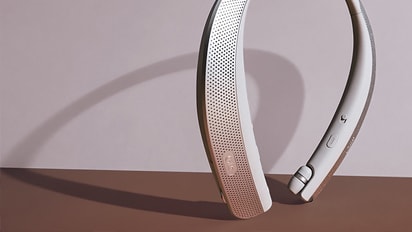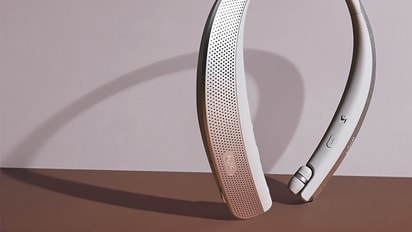※ If the error code continues to occur after following this guide, please request a repair service.
A code appeared on the refrigerator - what does it mean?
The error code is a signal that requires attention. It is displayed with alphanumeric characters on the digital control panel of the refrigerator.
Depending on the model, it may appear differently. The most common errors may be preceded by the letters: E, r or Er.
You can also force the refrigerator to display the error code, for example if there has been a power failure:
press the Freezer Temperature and Express Frz buttons at the same time for at least 3 seconds.
See where the buttons to press are based on the model:
Models with an external display:
Models with an internal display:
Codes that may appear on the display but do not indicate a refrigerator fault:
Demo Mode / Display mode
This setting disables all cooling in the refrigerator and freezer sections to conserve energy while on display in a retail store.
How to deactivate it:
Open the door on the refrigerator side.
Hold down the "FRIDGE" button and at the same time press the "Express FRZ" 3 times.
For some models, it is deactivated by holding down the "FRIDGE" and "Express FRZ" buttons at the same time for 3 seconds.
You will hear a sound to indicate that the setting has been deactivated.
Low ambient temperature
The Lo code is a warning that the ambient temperature has dropped below -10 degrees Celsius.
It should be noted that the product will not function optimally in an environment with such low temperatures.
High ambient temperature
The HI code is a warning that the ambient temperature has risen above +50 degrees Celsius.
It should be noted that the product will not function optimally in an environment with such high temperatures.
Codes that indicate a malfunction:
For the following error codes, please request service.
Condenser Fan error
The CF code indicates a fault with the cooling fan.
This fan cools the condenser to allow the refrigerant to condense. If the fan is blocked, the compressor will overwork to maintain the temperature at the required level.
As a result, the internal temperature will increase and cause a reduction in the performance of the appliance.
Your refrigerator is equipped with a sensor designed to detect when the fan is blocked.
Communication error
The CO code indicates a communication error between the main board and the display.
Freezer Fan error
The FF code indicates a fault with the freezer fan.
This fan circulates cold air throughout the freezer compartment. If the fan is blocked, the compressor will overwork to maintain the temperature at the required level.
As a result, the internal temperature will increase and cause a reduction in the performance of the appliance.
Your refrigerator is equipped with a sensor designed to detect when the fan is blocked.
Freezer Sensor error
The FS code indicates a fault with the freezer temperature sensor. This will cause a reduction in the appliance's performance.
Cycle error
The FU code indicates a freezer compartment fault.
After 10 minutes of starting the appliance, the temperature in the freezer has not dropped below 3.5 degrees Celsius, or during operation the temperature has risen above 3.5 degrees Celsius.
How to resolve:
- - Unplug the refrigerator from the electrical outlet.
- - Wait 60 seconds and then turn it on again, connecting it to a direct outlet, without power strips or multiple sockets.
- - If the error continues, proceed with the following checks:
- - Ensure the refrigerator is turned on, the compressor is running, and that both cooling and freezing temperatures are within normal ranges.
- - Check whether the freezer temperature is set to -18 degrees Celsius.
- - Check how often and for how long the door is opened. Opening the door allows warm air to enter, increasing humidity.
The longer the door remains open, the more it affects cooling performance. - - Check for any food items blocking the air vents, which can obstruct cold air flow.
- - Ensure the door closes properly and that the gaskets are sealed.
NoteTo test the gaskets, use a piece of paper. Open the door, insert the paper between the door and the cabinet, and close the door. Try to pull the paper out; it should resist if the seal is effective.
- - If food stored in the door bins are impacted by extreme temperatures, there may be an issue with door insulation.
Ice Maker Fan error
The IF code indicates a malfunction in the ice maker fan.
This fan is responsible for circulating cold air from the freezer to the ice maker. If there is a blockage in the fan, the ice making process will be affected.
The refrigerator is equipped with a sensor that detects any blockage in the fan.
Ice maker sensor error
The IS code indicates a fault in the ice maker temperature sensor.
The ice maker may then stop because the ice cubes are no longer dispensed into the ice bucket.
Ice maker motor error
The It code indicates a fault with the ice maker motor.
Refrigerator sensor fault
The rS code indicates a fault in the temperature detection system on the refrigerator side (R1, upper part). This will cause a reduction in the appliance's performance.
Defrost sensor fault
The dS code indicates a fault in the defrost temperature sensor.
As a result, the evaporator may be blocked by ice formed due to the moisture in the air.
Ambient temperature sensor issue
The rT code indicates a fault in the ambient temperature sensor.
This will cause a reduction in the appliance's performance.
Defrost resistance issue
The dH code (sometimes indicated as FdH or dHF) indicates that the temperature measured by the defrost sensor has not increased by more than 5 degrees Celsius within 80 minutes of the start of defrosting.
The evaporator may be blocked by ice formed due to the moisture in the air.
Water tank sensor
The SS code indicates an issue in the detection of the water tank temperature.
This will cause a reduction in the performance of the appliance.
Refrigerator sensor
The r2 code indicates an anomaly in the temperature detection on the refrigerator side (R2, lower part).
This will cause a reduction in the performance of the appliance.
Refrigerator fan error
The rF code indicates a fault with the refrigerator fan.
This fan circulates cold air in the refrigerator. If the fan is blocked, the compressor will overwork to maintain the temperature at the required level.
As a result, the internal temperature will increase and cause a reduction in the performance of the appliance.
Your refrigerator is equipped with a sensor designed to detect when the fan is blocked.
Water tank error
The tt code indicates a water tank fault. The water tank is missing or not inserted correctly, or the detection sensor is malfunctioning.
Communication error
The C1 code indicates a communication error between the dispenser and the display.
Flow Sensor error
Code gF indicates a malfunction in the appliance's water flow sensor.
It could be caused by a closed water tap, a kinked hose or incorrect water pressure.
How to resolve
- - Unplug the refrigerator from the electrical outlet.
- - Wait 60 seconds and then turn it back on, connecting it to a direct socket, without power strips or multiple sockets.
- - Wait until the appliance has completely restarted: this may take up to 5 minutes.
- - At this stage, all internal components are monitored and the refrigerant flow is started.
- - Ensure the water tap is fully open and that water is flowing to the appliance through the hose. The hose should not be kinked.
- - Check the water pressure.
- - The flow sensor operates in a certain range. See the user manual for details.
High Side of Cycle Leak
The CH code indicates a refrigerant leak on the high pressure side.
This can be caused by a faulty valve.
It appears when the temperature and compressor sensors show abnormal values.
Lower Side of Cycle Leak
The CL code indicates a refrigerant leak on the lower side.
This can be caused by a faulty valve.
It appears when the temperature and compressor sensors show abnormal values.
Compare the status of the LEDs that light up on the internal display, with what is shown in the images below:
The set temperature is displayed
Normal state: Operation is normal.
Freezer Sensor Error
Short circuit or broken connection: Check the connection of each sensor.
Refrigerator sensor error
Short circuit or open connection: Check the connection of each sensor.
Freezer defrost sensor error
Short circuit or connection break: Check the connection of each sensor.
External sensor error
Short circuit or connection break: Check the connection of each sensor.
Freezer defrost fault
Defrosting resistor and temperature fuse may be broken.
Heating relays may be malfunctioning. The drain may be clogged.
Fan Motor Error
No signal detected from the fan motor.
Fan Motor Error
No signal detected from the fan motor.
Cycle error
Check the cooling power of the compressor.
※ If the error code continues to occur after following this guide, please request a repair service.
This guide was created for all models, so the images or content may be different from your product.












